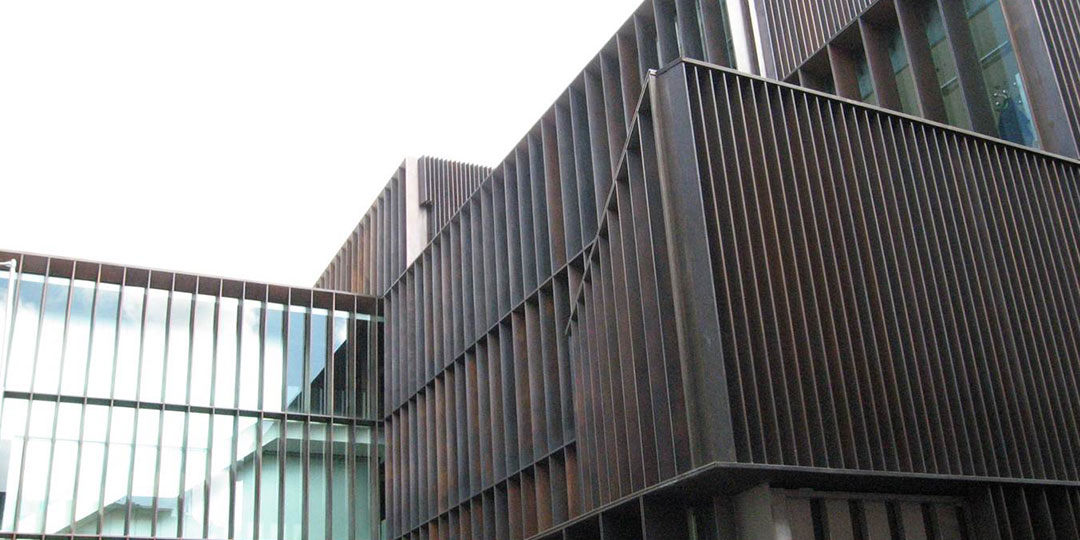-
Lightweight facade
This is a type of facade that adheres to the resistant structure of the building, but does not form part of it. Since it does not contribute to the stability of the building, the lightweight facade needs to be designed to support the loads that place stress on its components.
The materials that are normally used for cladding include glass and metal.
There are two types of construction for lightweight facades: curtain wall and panel facade. With a curtain wall, the facade passes continuously around the framework of the structure, whereas with a panelled facade the framework interrupts the facade.
Some particular advantages of the lightweight facade system are the ease of installation and the amount of light they let into the building.
Compared with other types of facade, lightweight facades provide less heat and sound insulation, and they have higher maintenance costs in the medium and long term.
This type of facade is mainly installed in medium and high-rise office buildings.
-
Heavyweight facade
As its name indicates, this type of facade tends to be made up of construction materials of considerable weight. For a facade to be considered heavyweight, the average weight, including the solid and hollow elements, must be above 100kg per square meter.
Within this category we find different types of facades which, depending on the thermal insulation needs, may be load-bearing or self-supporting and may or may not have an air chamber.

